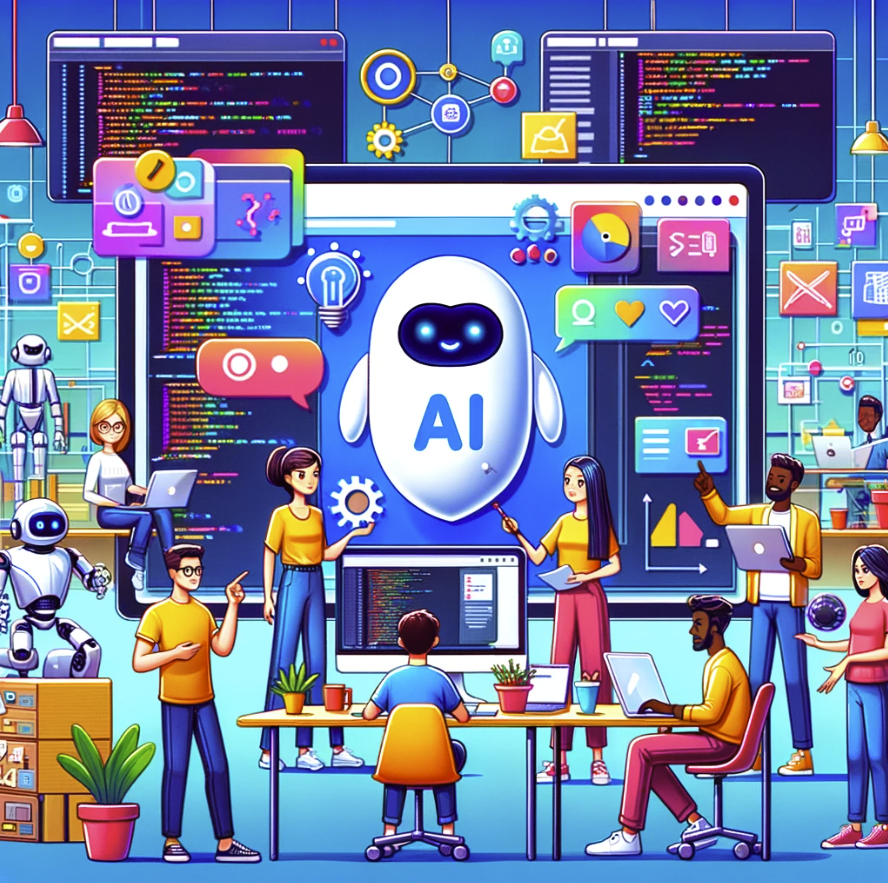Before diving into the development process, grasp the basics of AI and its applications.
This involves familiarizing yourself with machine learning, deep learning, neural networks, and natural language processing.
Online courses, tutorials, and reading materials offer a wealth of information to get you started.
Table of Contents
Planning Your AI App
Identify the Problem
Start by pinpointing the problem you want your AI app to solve. This step is crucial because it guides the entire development process.
Whether it’s automating a task, providing recommendations, or analyzing data, having a clear problem statement helps you stay focused.
Select the Right Tools and Technology
Choose the programming language and frameworks that suit your project best.
Python is widely used for AI development, thanks to its simplicity and the vast array of libraries available, such as TensorFlow, PyTorch, and Keras.
Consider the platform your app will run on and select the tools accordingly.
Designing Your AI Model
Gather and Prepare Your Data
AI thrives on data. Collect a dataset relevant to your problem.
This data may come from your own repositories, publicly available datasets, or through data generation techniques.
Clean and preprocess the data to remove inconsistencies and ensure it’s in the right format for your model.
Develop and Train Your Model
With your data ready, start building your AI model.
This involves selecting an algorithm that matches your problem’s complexity and goals.
Use your dataset to train the model, adjusting parameters and algorithms as needed to improve accuracy and performance.
Testing and Refining
Evaluate Your Model
After training, assess your model’s performance using a separate test dataset.
Look at metrics such as accuracy, precision, recall, and F1 score to understand how well your model predicts or analyzes based on new data.
This evaluation may reveal the need for further training or adjustments.
Iterate and Improve
Refining your AI app is a continuous process.
Based on test results, tweak your model, experiment with different algorithms, or introduce more data for training.
Iteration helps in honing the app’s effectiveness and efficiency.
Deploying and Monitoring
Deploy Your AI App
Once satisfied with your model’s performance, integrate it into your application.
This step might involve setting up a server or cloud environment, depending on where the app will run.
Ensure your app has a user-friendly interface and is accessible to your target audience.
Monitor and Update Regularly
After deployment, continuously monitor your app’s performance.
Gather user feedback, track how the app handles real-world data, and make updates to address any issues.
Regular maintenance ensures your AI app remains relevant and effective over time.
Example
Let’s illustrate a step-by-step approach to building an AI app with a specific example:
Example: Creating an Image Style Transfer App
This app will apply the artistic style of one image (like a Van Gogh painting) to another (like a personal photo), creating stylized images.
1. Define the Problem
- Goal: Transform images based on an input style image provided by the user.
- Target Audience: Photography enthusiasts, art lovers, social media users.
2. Choose Technologies
- Programming Language: Python (for its extensive AI libraries)
- Framework: TensorFlow or PyTorch (both are powerful deep learning frameworks)
- Libraries:
- OpenCV (for image processing)
- PIL or Pillow (for image manipulation)
- Front-end (Optional): Consider a web framework like Flask or Django to create a user-friendly interface.
3. Data Collection & Preparation
- Gather style images: Images representing different artistic styles (paintings, sketches, etc.).
- Preprocess images: Resize and normalize images for consistent input to your model.
4. Model Selection and Training
- Pre-trained Style Transfer Models: Use existing models like the VGG network, trained on large image datasets, to extract stylistic features.
- Fine-tuning (Optional): Adapt an existing model for specific artistic styles.
- Training: Feed your chosen model with pairs of style images and corresponding content images. The model learns to extract style features.
5. App Development
- Image Upload: Create a function for users to upload their content image and select a style image.
- Style Transfer: Implement the core logic using your trained model:
- Extract features from the content and style image.
- Combine features to produce a stylized image.
- Image Display: Present the stylized output to the user, allowing for download.
6. Integrate into an App
- Web App: Use Flask or Django to create a web-based interface.
- Mobile App: Consider frameworks like React Native or Flutter for cross-platform mobile app development.
7. Test & Iterate
- User Testing: Get feedback from potential users on the UI and results.
- Performance Monitoring: Analyze model performance based on various image inputs and styles. Improve and refine as needed.
Additional Considerations
- Deployment: Explore cloud services like AWS or Google Cloud Platform for hosting and scaling your app.
- Monetization: If appropriate, implement ads, in-app purchases (more styles!), or subscription models.
Building AI apps is an iterative process. Start with a simple model and dataset, then refine and expand as you gather feedback and explore more advanced techniques.
Conclusion
Building an AI app requires a systematic approach, from understanding the basics of AI to deploying and monitoring your application.
By following these steps, you ensure that every part of the process adds value to the final product.
Developing AI apps is an iterative process that benefits from constant learning and adaptation.


